Over 60 Years of Accomplishments
The League to Save Lake Tahoe has been instrumental in many of Tahoe's environmental success stories, from halting the construction of a bridge over the iconic Emerald Bay to bringing Lime bike-and-scooter share to the South Shore. As a result of our advocacy and efforts, we' ve arrested the decline in mid-water Lake clarity. Learn more about our rich history of successes below.
- 2019
- 2018
- 2017
- 2016
- 2015
- 2014
- 2013
- 2012
- 2011
- 2010
- 2009
- 2008
- 2007
- 2004
- 2002
- 2000
- 1999
- 1998
- 1997
- 1993
- 1990
- 1980
- 1970
- 1969
- 1960
-
3rd Upper Truckee River Survey Completed
The League completed the third Eyes on the Lake survey of the Upper Truckee River on September 5, 2019. Eyes on the Lake volunteers were accompanied by League, California State Park and Tahoe Resource Conservation District staff and surveyed from Elks Club Road upstream to Highway 50 looking for aquatic invasive plants and native mussels. Approximately 30 native western pearlshell mussels were found and no aquatic invasive plants in this stretch of river.
Download the survey report here.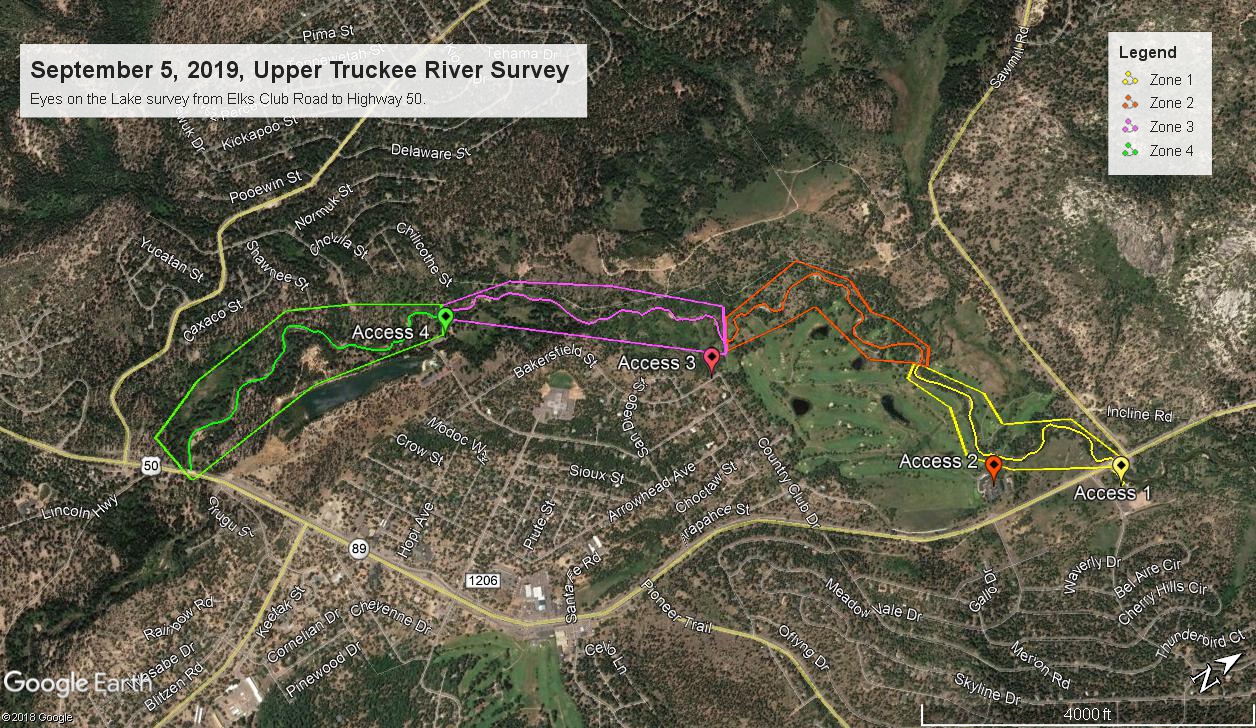
-
League Earned Best in Basin Award for Innovative Approach to Tackling Aquatic Invasive Species
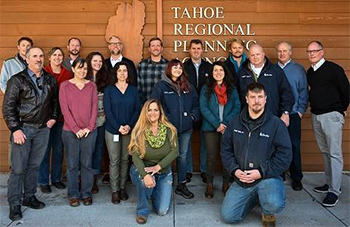 TRPA recognized the League and our partners at the Tahoe Keys Property Owners Association with a 2019 Best in Basin Award for our pioneering work in installing a bubble curtain in the Tahoe Keys. This technology helps control aquatic invasive species (AIS) that are damaging Lake Tahoe's water quality and clarity. It also helps keep these harmful invaders from spreading outside of the Keys to other locations in the Lake.
TRPA recognized the League and our partners at the Tahoe Keys Property Owners Association with a 2019 Best in Basin Award for our pioneering work in installing a bubble curtain in the Tahoe Keys. This technology helps control aquatic invasive species (AIS) that are damaging Lake Tahoe's water quality and clarity. It also helps keep these harmful invaders from spreading outside of the Keys to other locations in the Lake.
The bubble curtain is one example of how the League's position as an independent authority allows us to test innovative solutions to solving the environmental challenges threatening Lake Tahoe. Using the best available science and a flexible approach, the League is helping Keep Tahoe Blue.
Read more about our efforts to tackle aquatic invasive species in the Tahoe Keys.
-
2nd Upper Truckee River Survey Report by League finds no aquatic invasive plants
The League completed the second Eyes on the Lake survey conducted on the Upper Truckee River on August 21, 2018. League staff and Eyes on the Lake volunteers surveyed from Highway 50 to Elks Club Road looking for aquatic invasive plants. No aquatic invasives plants were found in this strech of river.
-
Lime bikeshare expanded service, adding electric scooters to their fleet
Due to the success of Lime's pilot program in 2017, Lime expanded service in South Lake Tahoe. Hundred of thousands of riders choose to ride bikes or electric scooters to get around Lake Tahoe. In total 218,131 miles were ridden and 193,481 pounds of carbon dioxide was saved!
-
Shoreline Plan approved
The Shoreline Plan provides guidance around construction of structures for boating access—such as boat ramps, piers, buoys, marinas, boat lifts, boat houses and slips—as well as policies related to non-motorized boating on Lake Tahoe and the management of aquatic invasive species.
The League to Save Lake Tahoe joined the Shoreline Steering Committee in 2016 and actively participated in over 50 meetings to get a strong, publicly supported plan in place. On October 24, 2018 that happened when an official plan was approved. The plan will enhance recreation experiences around the Lake while also protecting the environment and planning responsibly for our future. For instance, the plan seeks to minimize user conflict on the Lake with 600-foot no-wake zones along all of Tahoe’s shores and a 200-foot buffer encircling every non-motorized user.
This is plan marks the first time in a long time that Lake Tahoe is protected by a comprehensive plan.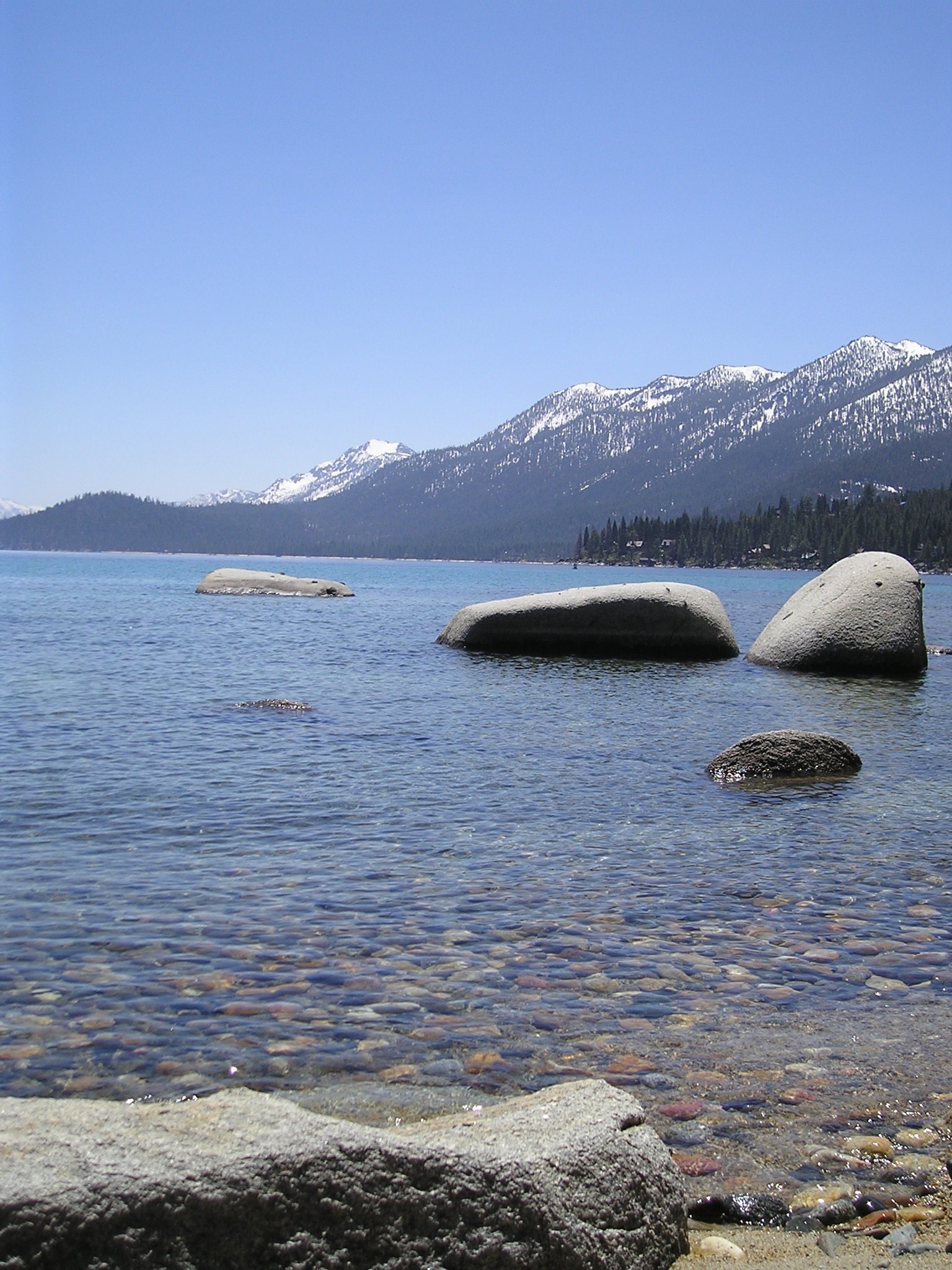
-
Polystyrene "Styrofoam" ban goes into effect on the south shore
Our community engagement program noticed expanded polystyrene, a type of plastic commonly known as “Styrofoam” used for food takeout containers and rigid polystyrene, which are harder plastic products like disposable utensils and straws, left behind in Tahoe’s shores and community in staggering numbers. Between 2015 and 2018, the League and community volunteers removed over 8,000 pieces of Styrofoam, over 2,000 plastic utensils and over 5,000 plastic straws from the Lake Tahoe watershed. Polystyrene is not biodegradable, is very hard to recycle, and breaks down into small particles that threaten wildlife and the environment. Our policy experts and engagement team used this data to convince the City of South Lake Tahoe to approve a polystyrene ban in April of 2018.
-
Voters approve Proposition 68, putting $27 million towards environmental projects in Tahoe
Voters approve $27 million in state funding for restoration and other environmental projects at Tahoe. The League successfully encouraged Californian’s to vote ‘yes’ on Proposition 68, the California Clean Water & Parks Act (SB5) in June of 2018.
-
Loop Road (US 50/South Shore Revitalization Project)
The League made meaningful gains in VMT/trip reduction, restoration, and was invited to sit on the design team for the Main Street Management Plan to help ensure proper implementation (see specific WINS here).
-
First Eyes on the Lake Survey of Upper Truckee River completed
On August 23, 2016, the League to Save Lake Tahoe coordinated an Eyes on the Lake volunteer survey of the Upper Truckee River from the mouth of the river to the overpass at Highway 50. The League conducted the survey in collaboration with the California Tahoe Conservancy, which has an interest in locating all infestations of aquatic invasive plants in the Upper Truckee River in advance of a large restoration project for the Upper Truckee Marsh, scheduled to break ground in 2019.
The five survey teams each successfully completed a survey of their assigned reach. The team at Reach 1 observed both Eurasian watermilfoil and curlyleaf pondweed; the teams at Reaches 2 and 3 observed Eurasian watermilfoil along with native aquatic plants; and the teams at Reaches 4 and 5 observed only native plants. Conservancy staff provided teams 1 and 2 with GPS units, but both teams experienced technical difficulties with the equipment.
Teams 1, 2, and 3 were able to map the furthest extent of Eurasian watermilfoil to just upstream of the Venice Drive stormwater outfall. Team 1 roughly mapped curlyleaf pondweed in Reach 1; however, survey data was not extensive due to the technical difficulty with the GPS unit. League staff thus approximated the furthest extent of curlyleaf pondweed to the upstream end of Reach 1 in the map below. Team 2 reported no observations of curlyleaf pondweed. All teams reported native and invasive aquatic plants in predominantly silty and muddy substrates, which is to be expected for both natives and invasives.
-
Re-authorization of the Lake Tahoe Restoration Act: $415 million to protect the Lake
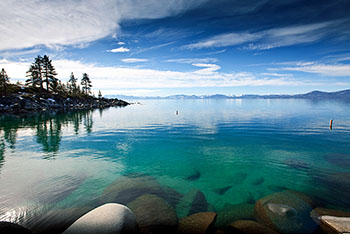
Advocacy by the League and our partners led to Congress passing the new Lake Tahoe Restoration Act in December. This critical legislation authorizes $415 million over seven years for projects to reduce the risk of catastrophic wildfire, tackle aquatic invasive species and drive environmental restoration to protect the Lake’s clarity. “This legislation and funding commitment is essential to Keep Tahoe Blue now and for future generations,” said Darcie Goodman Collins, PhD, the League’s executive director. Dr. Collins has been visiting Washington for years to inform federal legislators of Tahoe’s environmental challenges and funding needs.
-
Expansion of Keep Tahoe Blue Schools, growth of citizen science programs
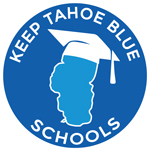
The League expanded Keep Tahoe Blue Schools, the League’s youth education program to provide environmental science and stewardship experiences for Lake Tahoe area students. In the 2014/15 school year, we educated more than 1,500 students. The year also saw gains in the League’s citizen science programs: we trained 127 Eyes on the Lake volunteers and our Pipe Keepers collected 519 water quality samples by the end of the 2014/15 water year.
-
$600,000 to tackle invasive species: Lake Tahoe Science and Improvement Account

The League was instrumental in securing $600,000 in funding from California to fight invasive species at Tahoe in 2014. The money is guaranteed through SB630, the same bill that preserved the Tahoe Compact in 2013. The League was the prime organization helping to write and support SB630. The Lake Tahoe Science and Improvement Account was a provision the League vigorously advocated for, and includes an obligation for the state to fund invasive species monitoring and control projects over several years. The California Tahoe Conservancy board will be allocating the funds.
-
Preserving the Tahoe Compact

The League’s most important achievement of 2013 was its legislative work to preserve the Tahoe Compact, which ensures California and Nevada abide by mutual environmental goals and policies protecting the Lake. This bi-state accord dates back to 1969, when Governors Ronald Reagan and Paul Laxalt agreed that one set of uniform regulations could protect the Tahoe Basin better than multiple sets of ordinances across two states, five counties and one city.
The Compact requires that any plans and projects must benefit the lake’s environment. It has provided a strong foundation for most of the League’s environmental successes over the decades, including halting casino growth, limiting development on sensitive lands like meadows, creating urban boundaries to stop sprawl, and helping to secure hundreds of millions of federal funds for restoration. Because of this accord, Tahoe will remain eligible for federal restoration funding, continue with a region-wide boat inspection program, and continue to benefit from uniform land-use planning and regulation, all of which will help protect Lake Tahoe's clarity in numerous ways.
-
League launches new volunteer program: Eyes on the Lake
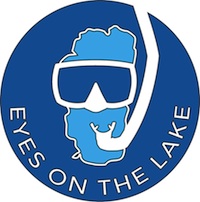
In June, 2013, the League, in partnership with the Lake Tahoe AIS Program, launched an important new volunteer program called Eyes on the Lake, in which water lovers of all kinds are recruited to identify and report locations of aquatic invasive plant infestations. Lake communities from Wisconsin to Maine have similar programs. Establishing one for Lake Tahoe will be an important and cost-effective step in controlling aquatic weeds like Eurasian watermilfoil and curlyleaf pondweed. Read more about Eyes on the Lake.
-
Plastic grocery bags banned in South Lake Tahoe
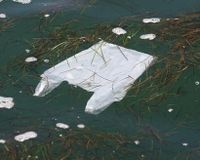
In 2013, the City of South Lake Tahoe became the first jurisdiction in Tahoe to ban plastic grocery bags, after the League, several community groups and concerned citizens urged the city council to take this important step to protect Tahoe’s waterways and wildlife. Plastic bags are a common and unsightly form of litter, never biodegrade, and can harm wildlife and ecosystems.
-
Bi-state working group helps iron out new regional plan
In December 2012 the TRPA governing board approved a new 20-year Regional Plan Update for Tahoe, bringing to a close over a decade of uncertainty over the future of development in the Basin. The League worked vigorously for several years to get the best RPU possible, including participating in a select bi-state working group in summer 2012 to iron out differences. The League suggested meaningful improvements and many concerns were addressed, including eliminating widespread development on most of Tahoe’s open land and designated recreation areas, providing an appeals process, as well as limiting increases in development height. While the final plan is not perfect, the League is satisfied that it will not put the lake at risk while also providing much needed revitalization to communities.
-
Pipe Keepers: A new volunteer water quality monitoring program
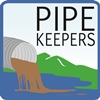
In late 2012, the League launched Pipe Keepers, in which volunteers examine water running from storm drains into Lake Tahoe and its largest tributary, the Upper Truckee River. The program aims to monitor water pollution in storm drains to see if it should be an area of heightened concern, and raise awareness about storm drain pollution and its directs impacts on lake clarity and public drinking water supply. Read more about Pipe Keepers.
-
League prevails in shorezone appeal
The US Ninth Circuit Court of Appeals agreed with the League in February, 2012, that TRPA must analyze boat pollution from illegal buoys before approving new development. The League’s goal is to now work with the TRPA, TLOA and Sierra Club to create a successful plan that protects the lake's clarity.
-
Sierra Colina: Court halts dangerous precedent on subdivisions
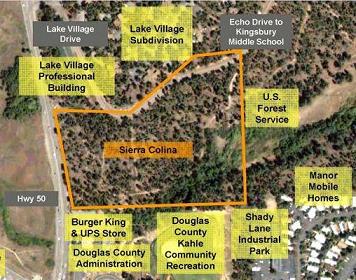
The US 9th Circuit Court of Appeals agreed with the League in October 2012 that a private drive to a gated subdivision project could not be exempt from coverage limitations. If the development had been allowed to proceed as proposed, large lots throughout Tahoe would have become easier to subdivide and develop, increasing pavement and coverage that endanger Tahoe’s clarity.
-
Tahoe Keepers launches online tool to help prevent invasive species
The League helped to plan and implement the outreach and education portions of the Tahoe Keepers stewardship program. Funds came from the Lake Tahoe Quagga Mussel Prevention Fund, which the League formed in conjunction with the Tahoe Lakefront Owners Association.TahoeKeepers.org provides video training on how to properly clean, drain and dry watercraft and gear after each use, and dispose of any plants or debris away from lakes and streams. Preventing invasive species is an important part of protecting Lake Tahoe’s shoreline beauty. Find Tahoe Keepers on Facebook. Read more about invasive species.
-
Keeping good rules intact
Two-stroke jet skis almost became legal in Tahoe again. In summer 2011, the League was invited to review a new, “streamlined” version of TRPA's 600 pages of ordinances. TRPA had hired an outside consultant to clean up the code, remove redundancy, and fix non-substantive errors like punctuation. However, through painstaking review, the League found substantive changes and some entirely new material. In one case, League staff discovered the consultant had inadvertently deleted one of Lake Tahoe’s most effective water quality ordinances. The League and TRPA staff worked collaboratively to correct errors and negotiate significant issues. The new streamlined code was approved in late 2011. The League looks forward to cooperating on similar projects in the future.
-
Protecting Tahoe's shoreline - Judicial decision sets high standard for regulators
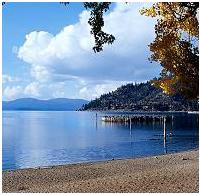
The Tahoe Regional Planning Agency has struggled in recent years to reconcile its obligation to protect Lake Tahoe with the overwhelming demands placed on the lake’s watershed as its surrounding population grows. In September, 2010, a federal judge told Tahoe’s regulators that they must do more to save Lake Tahoe before allowing any more piers, buoys and boat facilities along its shoreline. The TRPA’s plan would have created 60,000 additional boat trips per year on the lake, at a time when the region is violating ozone standards, and failing to meet 75 percent of its environmental protection goals.
The plan took a “spend now, pay later” approach that passed the bill on to future generations. The League has always pushed for a plan that includes enough safeguards to stop the degradation of Lake Tahoe and turn the tide toward protection and restoration. The League and Sierra Club sued the TRPA over its shorezone plan in 2008, and were represented by non-profit law firm Earthjustice.
-
Reducing pollution to Lake Tahoe: Total Maximum Daily Load
Despite pressure to weaken this landmark long-term water quality plan, the League successfully advocated to keep strong protections for Lake Tahoe in the TMDL, which was approved in November by the Lahontan Water Quality Control Board. The League will continue work at the EPA level to seek improvements. The TMDL identifies sources of pollution to Lake Tahoe, and places a maximum limit on each source in order to restore water quality.
-
Aspen forest restoration
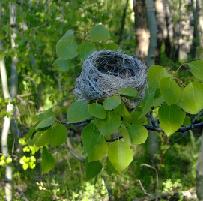
Crews from the Forest Service and California Tahoe Conservancy began work in the summer of 2010 restoring about 60 acres of aspen groves near the Upper Truckee River and around the Angora Fire area. The projects are made possible by $285,000 in funding from the South Tahoe Public Utility District, as part of a plan developed in collaboration with the League to Save Lake Tahoe to mitigate recycled water export line construction impacts.
-
Sandy Beach settlement
The League and the Friends of Tahoe Vista successfully settled their litigation against the Tahoe Regional Planning Agency and Placer County challenging those agencies' approval of the "Cerulean Estates by Wyndham" luxury timeshare project on the site of the old Sandy Beach campground in Tahoe Vista. This so-called ‘redevelopment’ project had received stunningly lucrative exemptions from the TRPA coverage rules that apply to all other landowners and threatened the character of the small rustic community, stirring outrage among local residents. The project will not go forward as originally planned and any revised project will be required to protect watershed values and avoid damaging impacts to the local community.
-
Kings Beach roadway reduction
The League successfully collaborated with other community members to advocate for the approval of a roadway reduction in the Kings Beach Commercial Core. The current four lane highway with traffic lights will be transformed to a three lane roadway with roundabouts, ameliorating traffic congestion and improving water quality by reducing coverage.
-
Lake Tahoe Restoration Act reauthorization for $415 million
The League successfully promoted the inclusion of language in the proposed reauthorization of the Lake Tahoe Restoration Act to commit the local unit of the Forest Service to the achievement of Lake Tahoe’s environmental standards, to withdraw the area from new mining claims, and to enhance protections for water quality and soils in the implementation of forest projects.
-
Boat inspections to protect Tahoe from invasive species
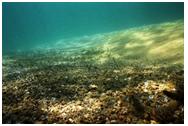
After much pressure from the League, the Tahoe Area Sierra Club, and concerned citizens, the TRPA adopted a policy to inspect all boats for invasive species and to enforce the closure of boat launching facilities when watercraft inspectors are not present.
Preventing aquatic invasive species has been a high priority for the League for over a decade. In 2003, the League sent samples of Asian clams discovered along the lake shore to Tahoe researchers and reported the finding in its summer 2003 newsletter. In 2008, the League partnered with the Tahoe Lakefront Homeowners Association to create a Lake Tahoe Quagga Prevention fund to support prevention efforts.
Two types of invasive mussels, the Zebra and Quagga mussel, have wreaked havoc on the ecosystems of at least 17 lakes and reservoirs in California and Nevada. After making their way to a body of water, these shellfish reproduce quickly and can have dramatic, devastating impacts. They clog water intake lines and congregate on the engines and hulls of boats. If they ever make it into Lake Tahoe, they will be here forever. They would transform our beautiful beaches into mazes of jagged shells and cause a stench as they decompose. Treatment could easily cost tens of millions of dollars every year.
Preventing invasive species contamination has now become a top priority among all stakeholders and public agencies at the lake.
-
Angora Fire restoration - Tahoe Forest Stewardship Day
Since 1997 the League has worked through its Tahoe Forest Stewardship Days to educate and engage all who love Lake Tahoe in the effort to restore the forests that comprise its watershed, and to help prevent dangerous and damaging wildfires. In June 2007, the Angora Fire burned over 3,000 acres of forest and more than 250 homes. For two years in a row, the League organized hundreds of volunteers to help restore the Angora Fire area. In fall 2007, volunteers spread mulch to prevent erosion and secured contour logs to help stabilize slopes. They helped restore a stream zone, spread over 200 pounds of native seed mix and planted over 400 tree seedlings. In fall 2008, volunteers removed noxious weeds, thinned trees, planted sugar pines and helped restore a stream zone.
-
League celebrates 50th anniversary
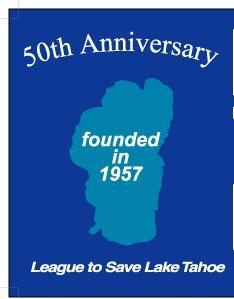
When the League celebrated its 50th anniversary in 2007, it received notes of congratulations from supporters throughout the nation, including Senator Dianne Feinstein, California Governor Arnold Schwarzenegger and California Lieutenant Governor John Garamendi.
-
Senator Feinstein recognizes League at 110th Congress
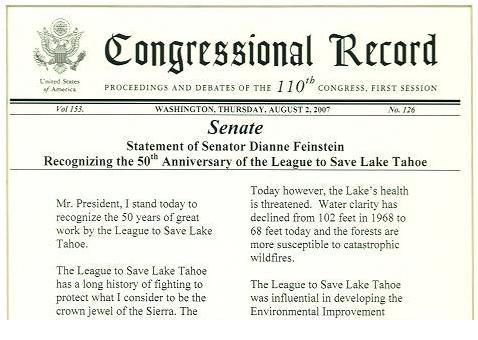
Senator Dianne Feinstein read the following statement regarding the League’s work during the proceedings and debates of the U.S. 110th Congress on August 2, 2007:
"Mr. President, I stand today to recognize the 50 years of great work by the League to Save Lake Tahoe.
"The League to Save Lake Tahoe has a long history of fighting to protect what I consider to be the crown jewel of the Sierra. The League was founded in 1957 as the Tahoe Improvement and Conservation Association to fight runaway development in one of our nation’s most beautiful regions. Since then, its membership has grown to 4,500 people, but its mission remains the same: to protect Lake Tahoe’s famously clear waters and the surrounding area’s natural beauty.
"Protecting Lake Tahoe is an issue very dear to my heart. My love for Tahoe goes back to my childhood, when I attended camp and rode horses through its beautiful forests. Today however, the Lake’s health is threatened. Water clarity has declined from 102 feet in 1968 to 68 feet today and the forests are more susceptible to catastrophic wildfires.
"The League to Save Lake Tahoe was influential in developing the Environmental Improvement Program that identified actions that needed to be taken to help restore Lake Tahoe and instrumental in organizing the 1997 Presidential Forum. The League has continued to display an unwavering commitment to protecting the irreplaceable natural resources the Lake Tahoe Basin is blessed with.
"I would like to congratulate the League to Save Lake Tahoe on a half century of outstanding environmental stewardship and wish them the best of luck in their continuing mission to Keep Tahoe Blue."
-
Governor Schwarzenegger praises League's dedication
In a formal letter to the League, Gov. Schwarzenegger said:
"Congratulations on your milestone in protecting a fantastic natural treasure. With dedication and persistence, you have helped to keep Lake Tahoe pristine for future generations to enjoy. Whether educating others about the challenges it faces or advocating for restoration projects, your contributions help make environmental protection a top priority.
"I commend your devoted board and staff members, both past and present, for their leadership to 'Keep Tahoe Blue.' Their passion is instrumental to your success and I thank them for their work. Together with their efforts, and that of government and private citizens, I am confident we will succeed in maintaining Lake Tahoe’s clarity."
-
California Lieutenant Governor John Garamendi commends League
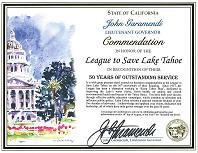
In a 2007 commendation to the League, California Lieutenant Governor John Garamendi wrote:
"It is with great pleasure that I extend my heartiest congratulations to the League to Save Lake Tahoe on the 50th anniversary of their founding. Since 1957, the League has been a champion working to “Keep Tahoe Blue,” dedicated to improving the Lake’s water clarity, forest health, air quality and overall environmental health and beauty of the Tahoe Basin. You have built your success through effective public education campaigns, which continue to stimulate and influence public policy. Lake Tahoe remains a national treasure because of your five decades of advocacy. I acknowledge and applaud your vision, dedication and leadership, all of which have only grown stronger over the past 50 years."
-
Presidential Forum -10th Anniversary
The 1997 Presidential Forum at Lake Tahoe, attended by President Bill Clinton and Vice President Al Gore, brought national attention to the “Jewel of the Sierra” and the efforts to Keep Tahoe Blue. In the summer of 2007, the League co-sponsored the 10th Anniversary Presidential Forum, which was attended by former President Clinton, Majority Leader Harry Reid, Senator Dianne Feinstein, Senator John Ensign and many other influential dignitaries and officials.
-
Heavenly Mountain Resort preserves old growth trees
Due to pressure from the League and other conservation organizations, Heavenly Mountain Resort backed away from a plan to cut down a rare stand of old growth trees in order to build a new run and chairlift. Regulators approved an alternative chairlift configuration that protected the ski area’s “North Bowl trees.” Clearing the stands would have degraded water quality and removed important wildlife habitat. The trees were also a favorite place for recreationists.
The League worked with Heavenly to produce a consensus ski area master plan that was a win-win for everyone. Heavenly agreed to strengthen its water quality protection and erosion-control program, which is now an industry-leading program. And Heavenly guests would see improvements at the resort, including more runs and high-speed lifts, new on-mountain lodge and summer activities.
-
$300 million in federal funds for restoration - Southern Nevada Public Lands Management Act
The year 2004 saw the culmination of many years’ effort by the League, in partnership with the local business interests participating in the Tahoe Transportation and Water Quality Coalition, when Nevada Senators Harry Reid and John Ensign persuaded Congress to amend the Southern Nevada Public Lands Management Act to permit $300 million from the sale of public lands near Las Vegas to support restoration at Lake Tahoe.
-
Supporting research and education: Tahoe Environmental Research Center
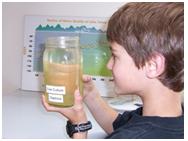
In 2004, the Tahoe Environmental Research Centerin Incline Village opened its doors. In 1995, the League raised and donated the first $100,000 to support the center. The center continues the work of the Tahoe Research Group, a group of scientists who have studied trends in Lake Tahoe clarity and pollution initiated by Dr. Charles Goldman in 1959.
Read more about the League’s Outreach & Education initiatives.
-
Victory in Meiss Meadows - Protecting Tahoe's watershed
The League convinced the Forest Service to end cattle grazing in Meiss Meadows, the southernmost tip of the Lake Tahoe watershed. This effort lasted over ten years, and included letters from hundreds of League members and supporters. The move marked the first time the Forest Service ended grazing rights on a parcel of public land.
-
Lake Tahoe Restoration Act - $300 million boost for the lake's environment
The League worked closely with Tahoe’s congressional representatives, led by California Sen. Dianne Feinstein, and including Nevada Senators Harry Reid and John Ensign, to pass the first Lake Tahoe Restoration Act, which authorized the federal government to share in the funding of the Environmental Improvement Program.
-
Two-stroke ban enforces noise standards and protects water quality
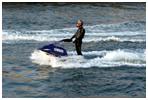
The League led the campaign to ban two-stroke jet skis on Lake Tahoe. The League sought to enforce Tahoe’s noise standards and protect its water and air quality. Operating at a normal capacity, two-strokes dumped at least half their fuel into the lake, leaving behind a sheen of oil. The TRPA banned two-strokes in 1999 and was sued over the regulation, but the plaintiff lost. Although detractors at the time said a ban would ruin Tahoe’s boating economy, businesses upgraded their fleets and no such decline materialized. Studies showed an 80 to 90 percent reduction in the amount of burned and unburned gasoline products on the lake after the ban went into effect.
-
U.S. EPA Outstanding Environmental Achievement Award
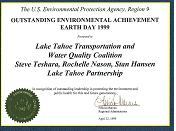
On Earth Day 1999, the U.S. Environmental Protection Agency's Region 9 awarded the Lake Tahoe Water Quality Coalition, including League Executive Director Rochelle Nason and business leaders Steve Teshara and Stan Hansen, its Outstanding Environmental Achievement award.
-
California Governor's Environmental and Economic Leadership Award
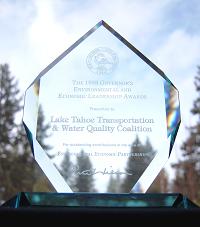
In 1998, California Governor Pete Wilson awarded the Lake Tahoe Transportation and Water Quality Coalition his Environmental and Economic Leadership Award for outstanding contributions in the area of environmental economic partnerships. The League initiated and co-founded the coalition.
-
U.S. EPA Certificate of Appreciation
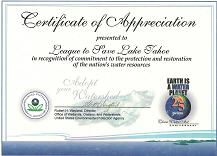
In 1997, the U.S. Environmental Protection Agency celebrated the 25th anniversary of the Clean Water Act. Robert Wayland, director of the Office of Wetlands, Oceans and Watersheds, presented a Certificate of Appreciation to the League to Save Lake Tahoe "in recognition of commitment to the protection and restoration of the nation's water resources." View the certificate.
-
Establishing urban boundaries
In 1993, TRPA sought to extend the South Stateline casino-hotel district northwards onto the Edgewood Golf Course, and to extend it southwards through the approval of a major new luxury subdivision on forested conservation lands. The League brought suit and a successful settlement established the principle that urban boundaries should constrain the growth of commercial, tourist, and high-density residential development to existing urbanized areas, and protect lands used for recreational and watershed purposes from high-intensity uses.
-
Late 1990s: The Age of Restoration - Environmental Improvement Program
In the 1990s, Lake Tahoe was losing clarity at an alarming rate. It became clear that growth control alone was not going to save the lake. What were direly needed were dollars for restoration and preservation.
The League was instrumental in bringing heightened attention to Lake Tahoe’s plight. In 1997, President Clinton and Vice President Al Gore hosted a Presidential Forum at the lake, bringing widespread media attention to the threats it faced. In addition, the forum launched the Environmental Improvement Program, which has leveraged over $1.5 billion in private, local, state and federal dollars for environmental restoration at the lake.
The League brought together the environment and business communities to co-found the Tahoe Transportation and Water Quality Coalition, which was instrumental in bringing about the Presidential Forum, launching the EIP and working toward passage of the Lake Tahoe Restoration Act of 2000. The coalition was recognized with the California governor’s Environmental and Economic Achievement Award in 1998 and received the U.S. EPA's Outstanding Environmental Achievement award in 1999.
Dr. Charles Goldman wrote in a summary of environmental problems facing Lake Tahoe:
“An extremely effective activist group, the League to Save Lake Tahoe, was instrumental in passing the scientific data collected by the Davis faculty of the University of California’s Tahoe Research Group to the public at large. This translation of scientific data to layman’s terms was particularly important. As the League’s membership grew, so did the public’s awareness of the growing threats to Lake Tahoe’s water quality. “Keep Tahoe Blue” bumper stickers began to appear all across the states of California and Nevada.”
-
A Plan to Save the Lake - Meaningful environmental goals and slow growth

1980 marked a new era of environmental protection for Lake Tahoe. Congress approved a revised Tahoe Regional Planning Compact, which strengthened TRPA’s environmental regulatory powers, revised its membership and voting procedures, banned new casinos and subdivisions, and ordered the creation of environmental goals and a 20-year regional plan.
The League was instrumental in the inclusion of all these provisions in the new Compact.
In 1982, a League campaign across California resulted in the passage of an $85 million bond initiative to fund the California Tahoe Conservancy. The money would fund purchases of environmentally sensitive land and erosion control projects at Tahoe.
In 1984, the TRPA passed a flawed regional plan, and the League sued to stop its implementation. A federal judge agreed, and enacted a building moratorium that lasted until a settlement was reached in 1987. The League successfully required TRPA to slow growth by controlling development rights, and to limit development on individual parcels to at least less than 30 percent, the only sustainable solution for a sensitive watershed. Sensitive lands likes meadows were restricted to even less development potential.
For 18 years after the 1987 settlement, the League supported the TRPA in its successful defense of a lawsuit challenging the temporary development moratorium. About 400 lakefront landowners had argued the moratorium was a government taking, while the TRPA, represented by John Roberts – then a top appellate lawyer, now the US. Chief Justice – argued a more moderate position, saying each moratorium should be considered individually. The land under moratorium lay in Tahoe's most environmentally sensitive area, which TRPA was charged with protecting. In 2001, the case arrived before the Supreme Court, which ruled in TRPA’s favor.
-
1970s: Halting casino growth
During the 1970s, the newly-formed TRPA lacked effectiveness as a true land-use and environmental regulator. The regulator’s board was composed mostly of local officials who were easily swayed by constituents who sought more development. The League began urging both states to change the make-up of the TRPA and revise the Compact to strengthen its mandate for environmental protection. That revision would eventually come to pass in 1980, but sadly, subdivisions and casinos had already been spreading across Tahoe.
The League filed several suits to stop high-rise hotels and casinos in the ’70s. One suit, League vs. TRPA Harvey’s Wagon Wheel and Raley’s, established an important precedent. The Ninth Circuit Court of Appeals overturned a Nevada Supreme Court ruling, and established that TRPA’s Compact was a question of federal law.
In 1977, as a result of the League’s casino lawsuits, state and federal agencies agreed to support a halt on casino growth in the Tahoe Basin. In 1978, public agencies purchased the land under the proposed 960-room “Hotel Oliver” and 560-room “Tahoe Palace Hotel” after the League’s lawsuits blocked construction.
In 1980, the new TRPA Compact banned new casinos and limited expansion of existing ones.
-
Uniform planning and regulation - Tahoe Regional Planning Agency
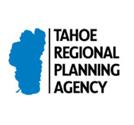
After the 1960 Squaw Olympics, the Tahoe Basin saw a dramatic increase in development pressure. At the same time, scientific studies began showing a decline in lake clarity. It became apparent that the area needed a planning and environmental regulatory agency that would govern Tahoe uniformly in both California and Nevada. The Tahoe Regional Planning Agency was formed in 1969 and charged with creating a plan to save Lake Tahoe. Among its mandates were to slow the urbanization of Tahoe and enact environmental standards to preserve the lake for future generations. The TRPA was created through an agreement, called the Compact, between the states of California and Nevada. The Tahoe Regional Planning Compact was enacted in 1969, a feat that required passage in both states’ legislatures, signatures by California Governor Ronald Reagan and Nevada Governor Paul Laxalt, and an act of Congress approving this rare agreement between two states.
The League led the effort at the state and federal level to enact this important legislation.
Again, Dr. Charles Goldman wrote:
“Reflecting on the important decisions that have been made since my arrival at Lake Tahoe in 1958, several stand out; the creation of the Tahoe Regional Planning Agency, for example, brought a lake divided by two states and five different counties, various municipalities, agencies and local governments under a single central authority. I accompanied League to Save Lake Tahoe leaders in successful meetings with governors Paul Laxalt of Nevada and Ronald Reagan of California to urge creation of the gestate agency, to be charged with protecting the lake’s unique environment. This Federal mandate was unpopular in some circles, since it imposed Federal control of an area split by two states and five counties, but it provided an essential unification of purpose. The objective was simply to preserve the environmental quality by regulating future development and repairing the damage that had already been done.”
-
Sewage export out of Tahoe - Porter-Cologne Water Quality Control Act
By the 1950s, small towns were growing fast around Tahoe. Sewer districts were dumping waste directly into the lake, endangering its famed clarity. The League assisted in the crafting a California law requiring that all sewage waste be exported out of the Basin. The Porter-Cologne Act was more strict than the federal Clean Water Act that followed a few years later, and outlawed the discharge of waste into lakes, rivers and wetlands in California, including Lake Tahoe.
The law’s benefits to Tahoe are immeasurable. Today, for instance,South Tahoe Public Utility District operates one of the most advanced wastewater treatment systems in the world. Solid wastes are removed and trucked out to composting operations, while all recycled water is treated, pumped through an $80 million pipeline over Luther Pass, and applied to ranch lands in Alpine County.
-
1960s: Bridge over Emerald Bay - Stopping a flawed growth plan

In the early 1960s, the resident population of the Tahoe Basin was around 12,000, but a development plan was underway to drastically urbanize Tahoe. The plan aimed to boost the population to 200,000 people by 1984. A high-speed freeway would circle the lake, and a bridge would span majestic Emerald Bay. Subdivisions and casinos would fill the Tahoe Basin.
Tahoe was on the verge of a new era of development pressure. The Tahoe Keys development had broken ground in 1959. At the same time, Dr. Charles Goldman had begun documenting a decline in lake clarity. The stakes were high.
The newly formed League went to work lobbying lawmakers and the public. The League led the effort to remove the “Westshore Parkway Study” from the California governor’s legislative program, while League-led citizens groups held public meetings to rally opposition. Eventually, policymakers were swayed to drop the plan. Yet, the pressure to urbanize Tahoe continues to this day.




